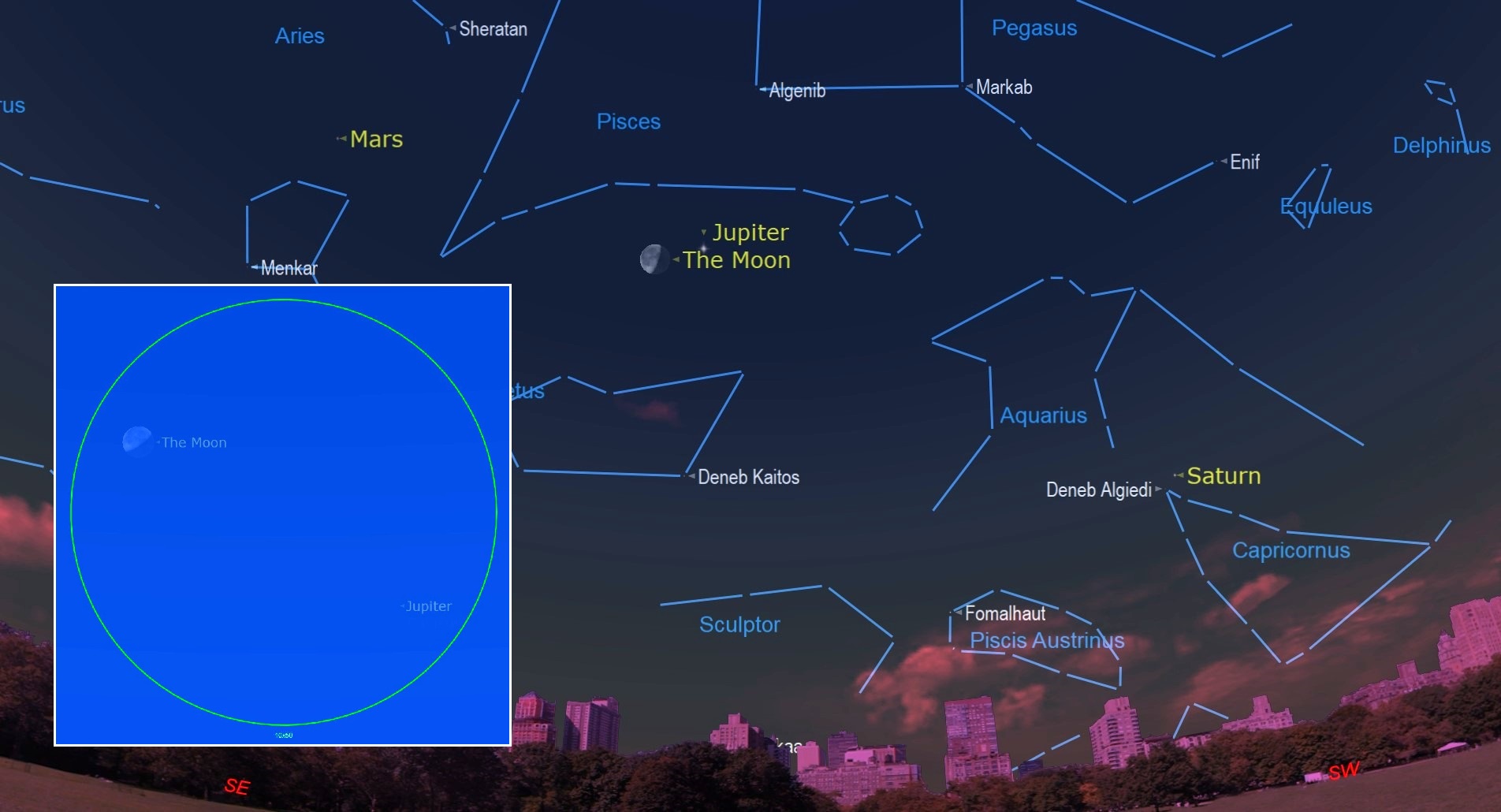See the moon swing past Jupiter in Tuesday morning's sky
The pair will be close enough to share the same view in a pair of binoculars.

The moon continues its monthly planetary tour with a brief visit to Jupiter between midnight and dawn on Tuesday (July 19).
During these wee hours, the half-illuminated moon will shine several finger widths below (or 3 degrees to the celestial southeast of) the bright dot of Jupiter, according to astronomer Chris Vaughan of Astrogeo.ca, who prepares Space.com's monthly Night Sky calendar in cooperation with Simulation Curriculum.
The pair will be close enough to share the same view with a pair of binoculars. They will then move halfway up the southern sky by the time the sun begins to rise.
Related: The brightest planets in July's night sky: How to see them (and when)
From mid-July onward, Jupiter is well placed for observation as the gas giant starts to rise from the eastern horizon before midnight.
"Jupiter will rise about four minutes earlier each night," writes Vaughan. "Allowing even the youngest skywatchers to view it in the coming weeks."
According to Vaughan, you should be able to see Jupiter's four Galilean moons to the east and west of the planet. Those viewing the Jovian scene with a telescope will be able to see the moons more clearly and also make out dark bands across Jupiter's disk.
Breaking space news, the latest updates on rocket launches, skywatching events and more!
But that's not all!
"The Great Red Spot will cross the planet every second or third night," writes Vaughan. And eagle-eyed observers may also be able to spot the small, round, shadow of one or more of the Galilean moons transiting the planet.

Looking for a telescope for the next stargazing event? We recommend the Celestron Astro Fi 102 as the top pick in our best beginner's telescope guide.
Meanwhile, throughout July, the moon will continue its planetary tour, calling in on Mars on July 21, Uranus on July 22, Venus on July 26, then wrapping up on July 29 when the very thin crescent moon slithers past Mercury.
If you're looking for a telescope or binoculars to observe the moon and planets during July, our guides for the best binoculars deals and the best telescope deals now can help. Our best cameras for astrophotography and best lenses for astrophotography can also help you prepare to capture the next skywatching sight on your own.
Fancy taking a more in-depth moonlit tour of our rocky companion? Our ultimate guide to observing the moon will help you plan your next skywatching venture whether it be exploring the lunar seas, mountainous terrain, or the many craters that blanket the landscape. You can also see where astronauts, rovers and landers have ventured with our Apollo landing sites observing guide.
Follow us on Twitter @Spacedotcom and on Facebook.

Daisy Dobrijevic joined Space.com in February 2022 having previously worked for our sister publication All About Space magazine as a staff writer. Before joining us, Daisy completed an editorial internship with the BBC Sky at Night Magazine and worked at the National Space Centre in Leicester, U.K., where she enjoyed communicating space science to the public. In 2021, Daisy completed a PhD in plant physiology and also holds a Master's in Environmental Science, she is currently based in Nottingham, U.K. Daisy is passionate about all things space, with a penchant for solar activity and space weather. She has a strong interest in astrotourism and loves nothing more than a good northern lights chase!
